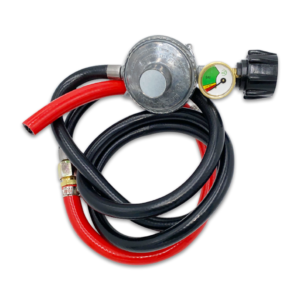Propane tanks are used for many reasons in several households these days. They have various applications, ranging from grilling to heating homes. If you have a propane tank as well, understanding how to read your propane tank gauge is important so you never run out of fuel at the wrong time. Whether you have a 500-gallon propane tank or a smaller 20 lb propane tank, knowing how to interpret the gauge is a vital skill to learn.

How to Read the Gauge
The gauge on a propane tank is a dial with numbers from 5 to 95. These numbers represent the percentage of propane in the tank. Here’s how to read the gauge:
- Find the Gauge: The gauge is typically found on the top of the tank, near the fill valve.
- Read the Dial: The needle points to a number, indicating the percentage of propane remaining in the tank.
- Understand the Numbers: If the needle points to 50, the tank is 50% full. For a 500-gallon propane tank, this means you have approximately 250 gallons left.
It’s important to note that propane tanks are never filled beyond 80% capacity to allow for expansion, so a full tank will show a maximum of 80 on the gauge.
The Importance of Knowing How to Read the Gauge
Knowing how to read your propane tank gauge helps you avoid running out of propane at critical times. This knowledge allows you to schedule propane deliveries on the correct time, whether you’re using a home propane tank refill service or a commercial propane delivery. Being proactive about monitoring your propane levels offers:
- Safety: Running out of propane unexpectedly can be dangerous. This is especially true in cold weather when you rely on it to heat your home.
- Convenience: Regularly checking your gauge ensures you have sufficient fuel for all your needs for cooking, heating, and other activities.
- Lower Costs: Prevents emergency delivery charges that can be possible if you run out of propane and need a quick refill.
Things to Keep in Mind
While reading your propane tank gauge is straightforward, there are a few things to keep in mind:
- Temperature Impact: Propane can expand and contract with temperature changes. This can affect the gauge readings. You should check your gauge on consistent temperatures to get the most accurate reading.
- Tank Size: Keep notice of your tank size as this affects how much propane you have left when the gauge reads a certain percentage.
- Regular Checks: Make it a habit to check your gauge frequently, especially during peak usage times.
What to Do When the Reading Shows Low Propane Levels
When your propane tank gauge shows low levels, it’s time to take action:
- Call for a Refill: Call your propane supplier for a propane refill. You can also search for “propane delivery near me” or “propane companies near me” to find local services.
- Consider Automatic Delivery: Many propane suppliers offer automatic delivery services. This service is more useful for larger tanks like the 500-gallon propane tank.
- Propane Exchange Options: For smaller tanks, you can often use a propane exchange service at a local retailer. Search for “propane exchange near me” for nearby options.
Conclusion
Understanding how to read a propane tank gauge and managing your propane supply effectively can save you from uncertain problems. Regular checks and timely refills are key. Utilize local services to ensure you always have a reliable supply. Whether you need a refill for your home propane tank or commercial propane delivery, knowing your tank’s status is essential for seamless and safe propane usage.


